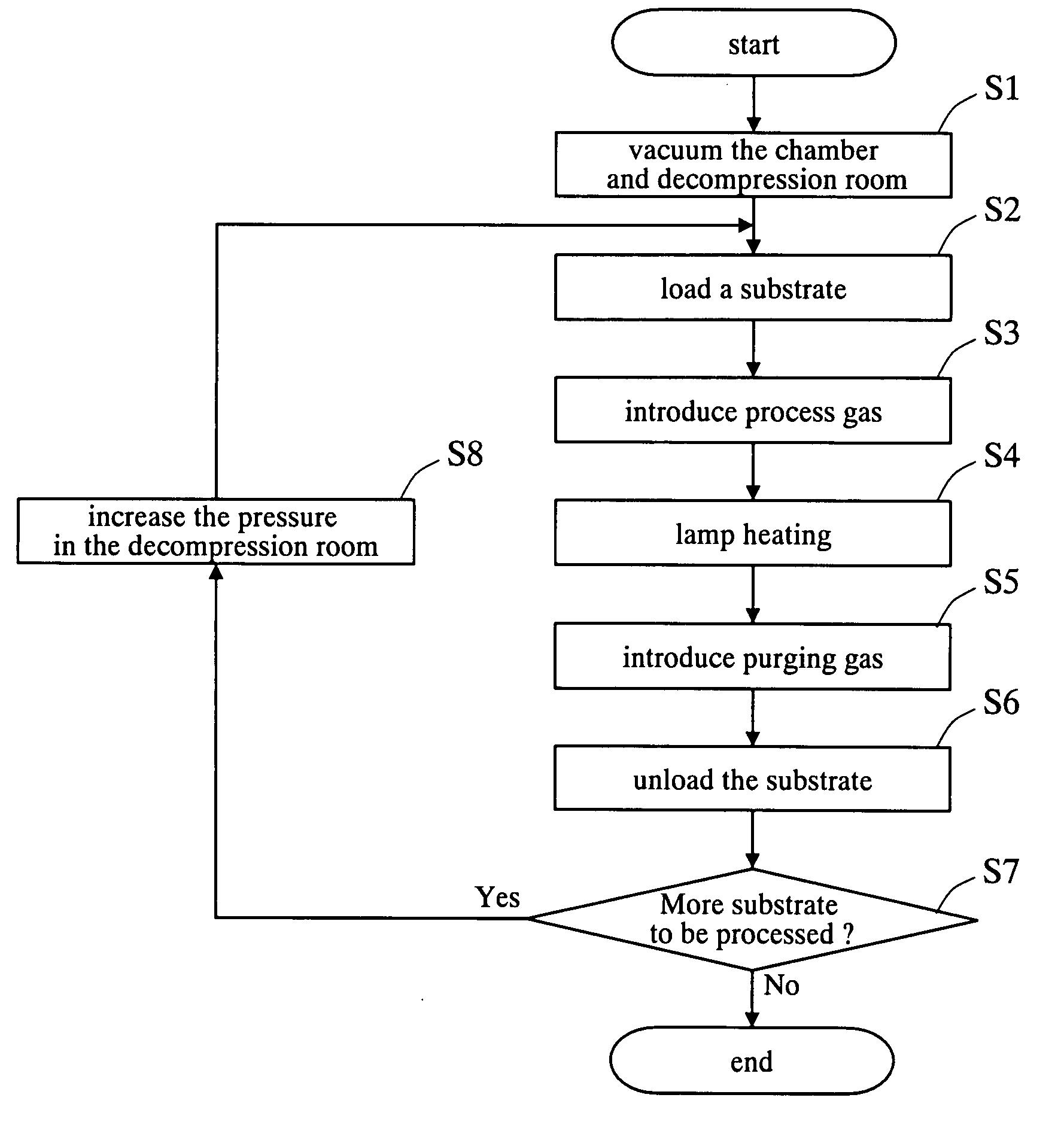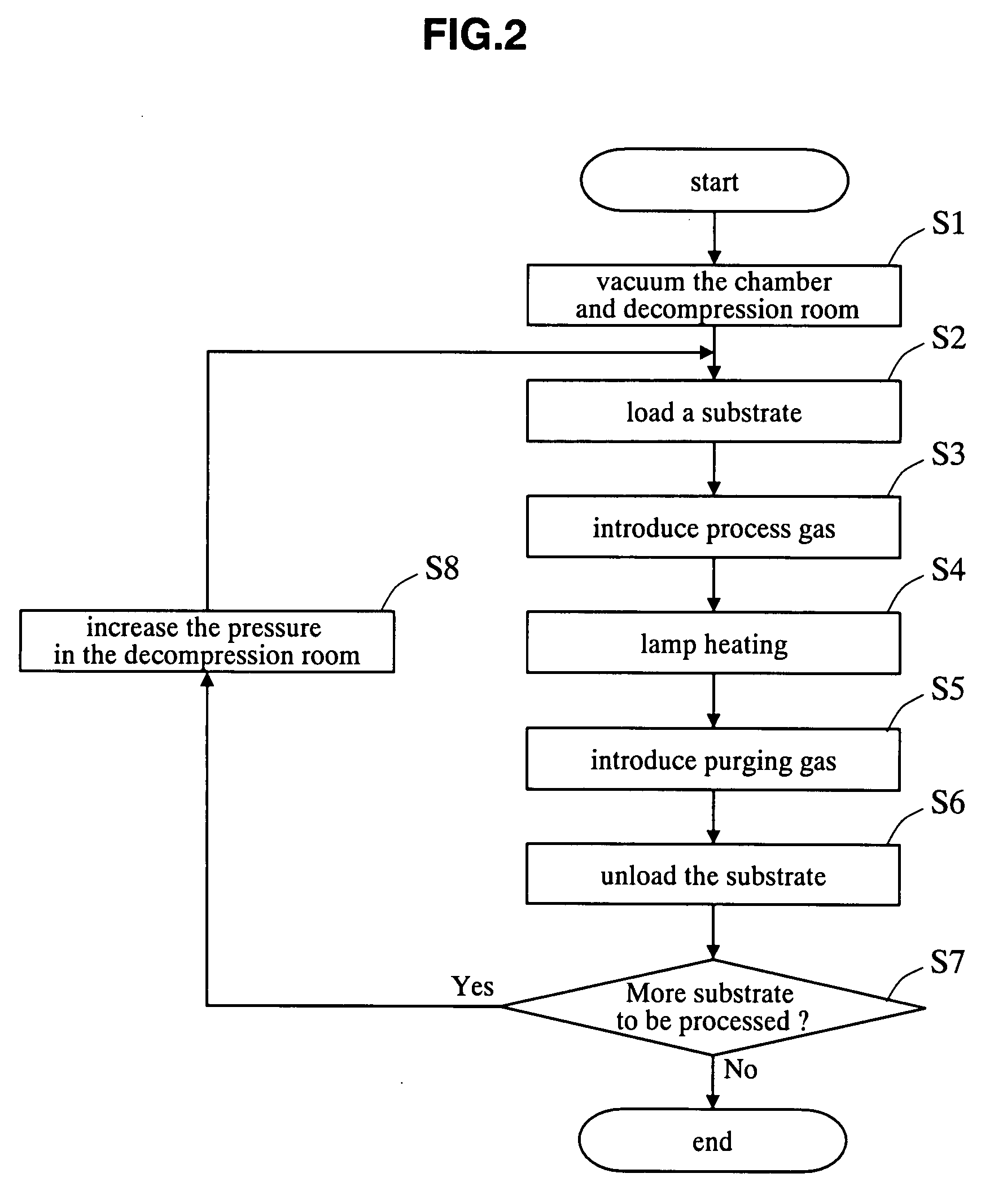Apparatus and method for processing a substrate
a substrate and apparatus technology, applied in the direction of transportation and packaging, nuclear engineering, railway signalling, etc., can solve the problems inability to prevent ambient temperature rise due to components within the chamber, and largely change the electrical properties of semiconductor devices. , to achieve the effect of small thickness difference, small difference in film thickness between the first substrate and thereafter
- Summary
- Abstract
- Description
- Claims
- Application Information
AI Technical Summary
Benefits of technology
Problems solved by technology
Method used
Image
Examples
Embodiment Construction
[0035]An embodiment of the present invention is described in detail hereafter with reference to the drawings. In the embodiment below, the present invention is realized in forming an oxide film on the surface of a silicon substrate by ISSG oxidization.
[0036]FIG. 1 is a cross-sectional view showing the structure of a substrate processing apparatus in an embodiment of the present invention. In FIG. 1, the same components as in the prior art substrate processing apparatus shown in FIG. 5 are given the same reference numbers and their explanation is omitted in the detailed explanation below.
[0037]As shown in FIG. 1, a substrate processing apparatus 1 of this embodiment comprises a lamp unit 2 in which multiple lamps such as tungsten halogen lamps are arranged in one plane above a cylindrical chamber 3 in which the substrate is processed via a window assembly 4 as in the prior art substrate processing apparatus 100.
[0038]The chamber 3 is provided with a gas inlet 11 on a sidewall and a g...
PUM
| Property | Measurement | Unit |
|---|---|---|
| partial pressures | aaaaa | aaaaa |
| thicknesses | aaaaa | aaaaa |
| thicknesses | aaaaa | aaaaa |
Abstract
Description
Claims
Application Information
 Login to View More
Login to View More - R&D
- Intellectual Property
- Life Sciences
- Materials
- Tech Scout
- Unparalleled Data Quality
- Higher Quality Content
- 60% Fewer Hallucinations
Browse by: Latest US Patents, China's latest patents, Technical Efficacy Thesaurus, Application Domain, Technology Topic, Popular Technical Reports.
© 2025 PatSnap. All rights reserved.Legal|Privacy policy|Modern Slavery Act Transparency Statement|Sitemap|About US| Contact US: help@patsnap.com



